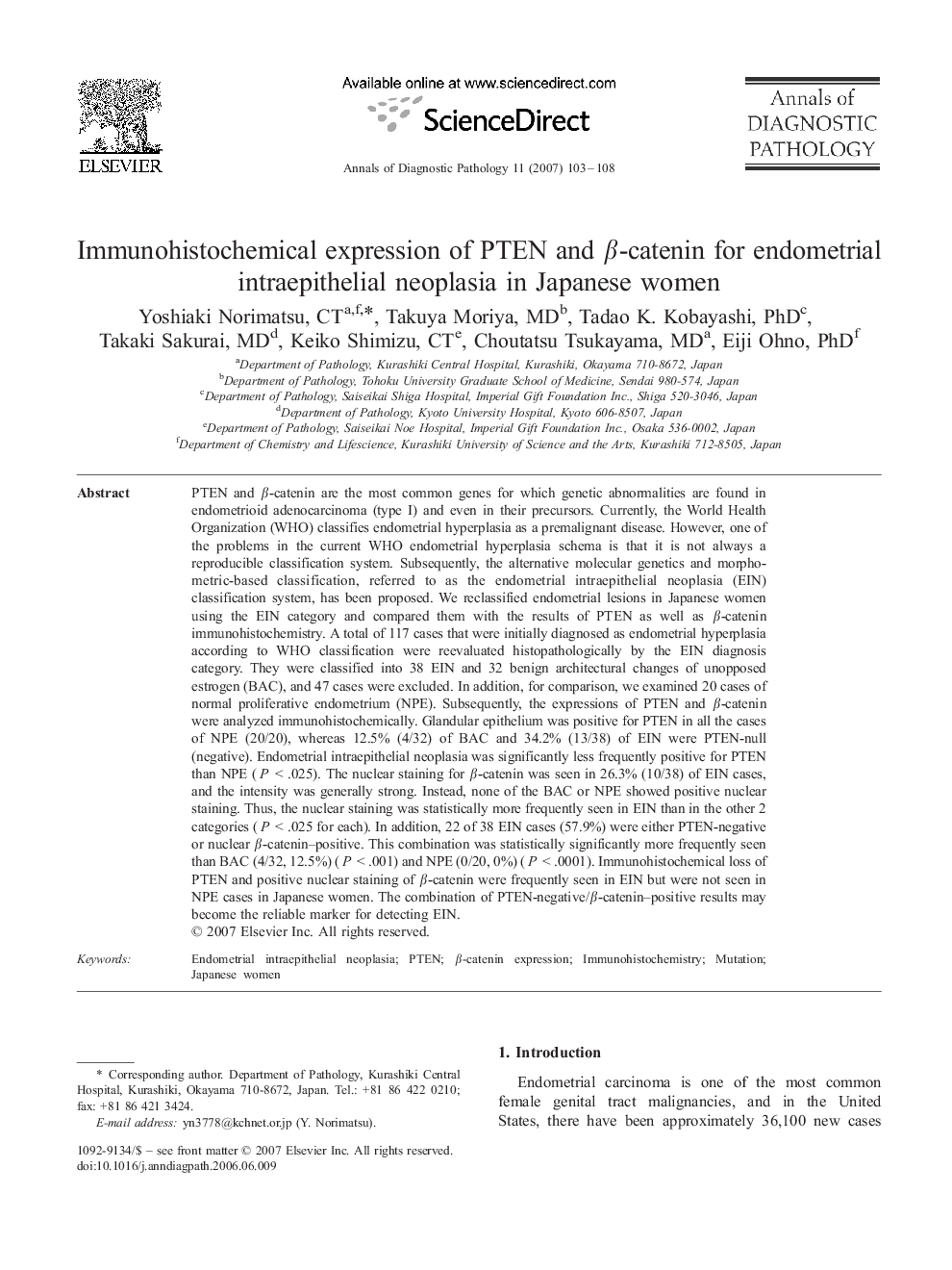| کد مقاله | کد نشریه | سال انتشار | مقاله انگلیسی | نسخه تمام متن |
|---|---|---|---|---|
| 4130329 | 1606528 | 2007 | 6 صفحه PDF | دانلود رایگان |

PTEN and β-catenin are the most common genes for which genetic abnormalities are found in endometrioid adenocarcinoma (type I) and even in their precursors. Currently, the World Health Organization (WHO) classifies endometrial hyperplasia as a premalignant disease. However, one of the problems in the current WHO endometrial hyperplasia schema is that it is not always a reproducible classification system. Subsequently, the alternative molecular genetics and morphometric-based classification, referred to as the endometrial intraepithelial neoplasia (EIN) classification system, has been proposed. We reclassified endometrial lesions in Japanese women using the EIN category and compared them with the results of PTEN as well as β-catenin immunohistochemistry. A total of 117 cases that were initially diagnosed as endometrial hyperplasia according to WHO classification were reevaluated histopathologically by the EIN diagnosis category. They were classified into 38 EIN and 32 benign architectural changes of unopposed estrogen (BAC), and 47 cases were excluded. In addition, for comparison, we examined 20 cases of normal proliferative endometrium (NPE). Subsequently, the expressions of PTEN and β-catenin were analyzed immunohistochemically. Glandular epithelium was positive for PTEN in all the cases of NPE (20/20), whereas 12.5% (4/32) of BAC and 34.2% (13/38) of EIN were PTEN-null (negative). Endometrial intraepithelial neoplasia was significantly less frequently positive for PTEN than NPE (P < .025). The nuclear staining for β-catenin was seen in 26.3% (10/38) of EIN cases, and the intensity was generally strong. Instead, none of the BAC or NPE showed positive nuclear staining. Thus, the nuclear staining was statistically more frequently seen in EIN than in the other 2 categories (P < .025 for each). In addition, 22 of 38 EIN cases (57.9%) were either PTEN-negative or nuclear β-catenin–positive. This combination was statistically significantly more frequently seen than BAC (4/32, 12.5%) (P < .001) and NPE (0/20, 0%) (P < .0001). Immunohistochemical loss of PTEN and positive nuclear staining of β-catenin were frequently seen in EIN but were not seen in NPE cases in Japanese women. The combination of PTEN-negative/β-catenin–positive results may become the reliable marker for detecting EIN.
Journal: Annals of Diagnostic Pathology - Volume 11, Issue 2, April 2007, Pages 103–108